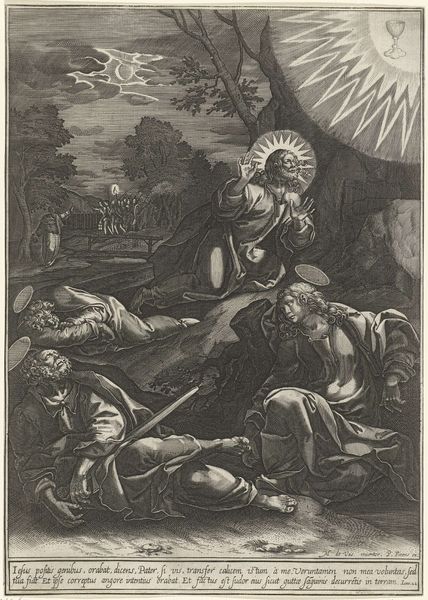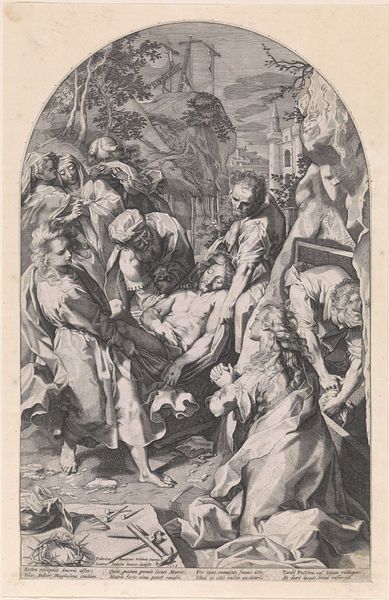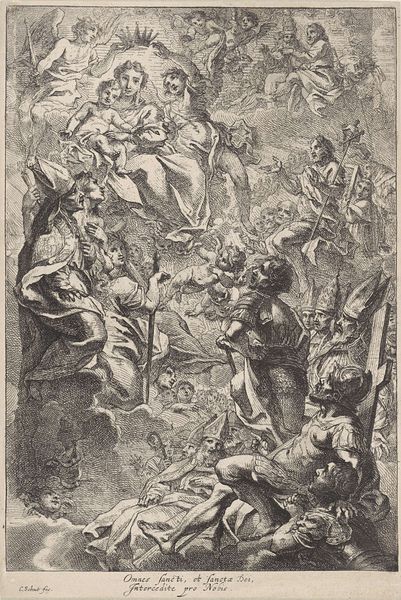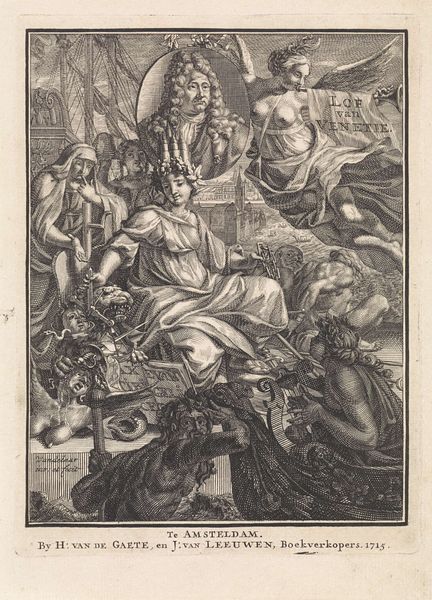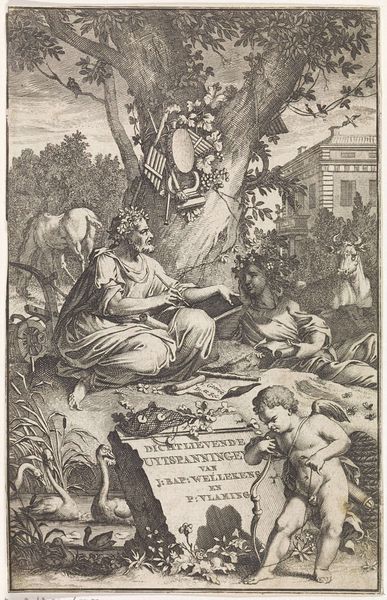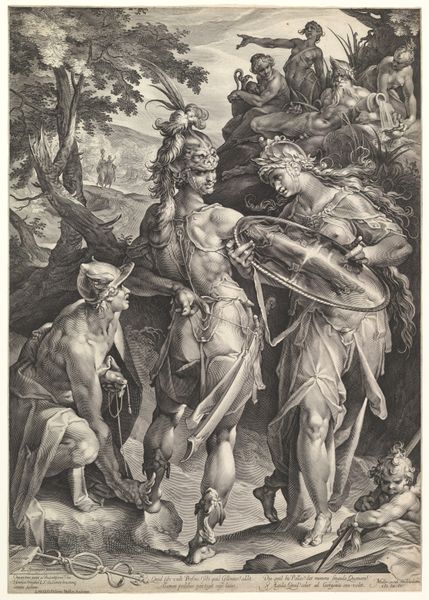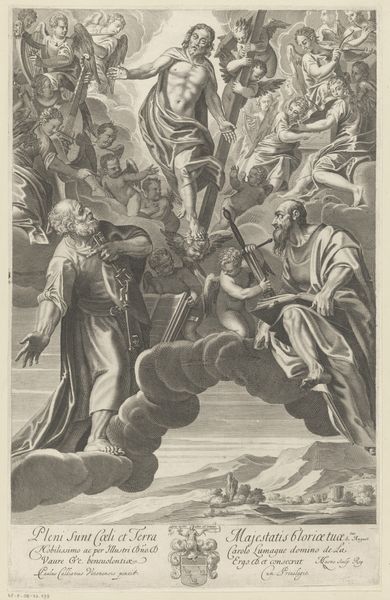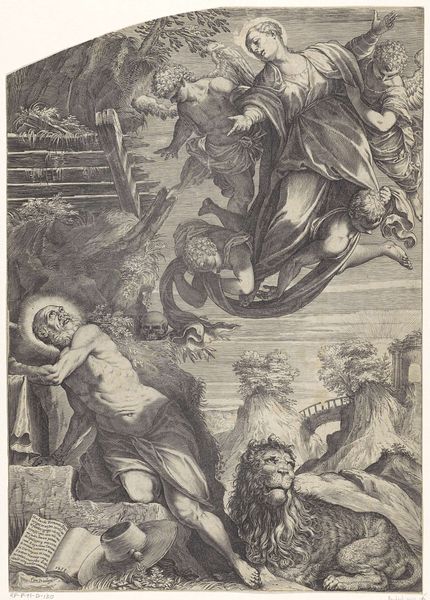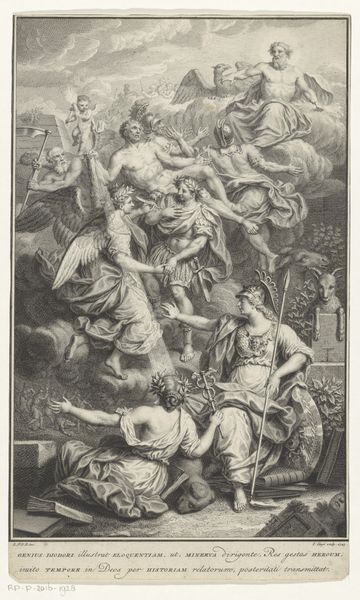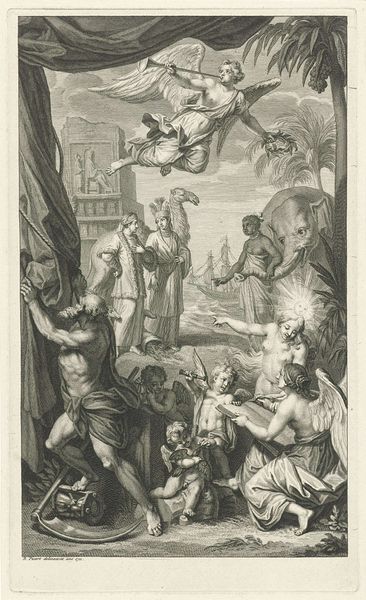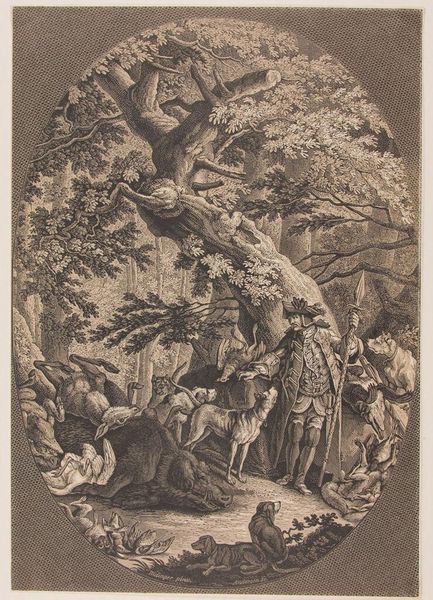
Vestaalse maagd Tuccia draagt water in een vergiet om haar onschuld te bewijzen 1608
0:00
0:00
print, engraving
#
allegory
#
baroque
# print
#
cityscape
#
history-painting
#
nude
#
engraving
Dimensions: height 285 mm, width 495 mm, height 395 mm, width 495 mm
Copyright: Rijks Museum: Open Domain
Curator: Ah, I find the visual weight of this print striking! It's Jacob Matham’s “Vestaalse maagd Tuccia draagt water in een vergiet om haar onschuld te bewijzen”, made in 1608. It’s currently held here at the Rijksmuseum. What's your first reaction? Editor: Intriguing, unsettling almost. The drama's really ramped up, isn't it? That light, almost theatrical. But also, what an improbable test! Carrying water in a sieve— it's either divine intervention or sheer illusion. Curator: It is a rather high-stakes image! Tuccia, a Vestal Virgin accused of impurity, proves her innocence through…well, that improbable test. For me, the real fascination lies in the symbolism here: the sieve itself. Its ability— or rather, its *inability*— to hold speaks volumes. Editor: Yes, the sieve as a symbol of potential and impossible expectations, all intertwined. We know what a sieve does – filters, separates – it does not carry! It’s practically screaming "innocent," while paradoxically declaring it unachievable through rational means. But look at the placement. High above in the engraving we have angels. Below, a reclined river God and Romulus being nursed by a she-wolf – foundational myths swirling together. Curator: You are right – these motifs are anything but casual ornamentation; they're actively reinforcing power. But for all that apparent drama, that theatrical flourish of the Baroque, the emotional core feels surprisingly…distant. It’s all performance, and less, say, empathetic feeling. Editor: Agreed. Matham presents an idea *about* innocence, power and myth instead of asking us to genuinely connect with Tuccia's predicament. Perhaps he focuses more on power structure than psychological portrait. But isn't it also about institutional distrust? If proof defies physical laws, is that proof, or simply manipulated spectacle? And does that mean it reinforces or subverts existing hierarchies? Curator: An astute point. Perhaps both, depending on where you’re seated within the system of belief. It highlights the very precariousness of “truth” itself, doesn’t it? Editor: It absolutely does, leaving us to grapple with the slippery nature of what’s presented and the subtle power dynamics at play. Matham's piece encourages active observation rather than a passive viewing. Curator: So true – and with that in mind, it takes us away pondering a complex set of considerations in our contemporary climate.
Comments
No comments
Be the first to comment and join the conversation on the ultimate creative platform.
